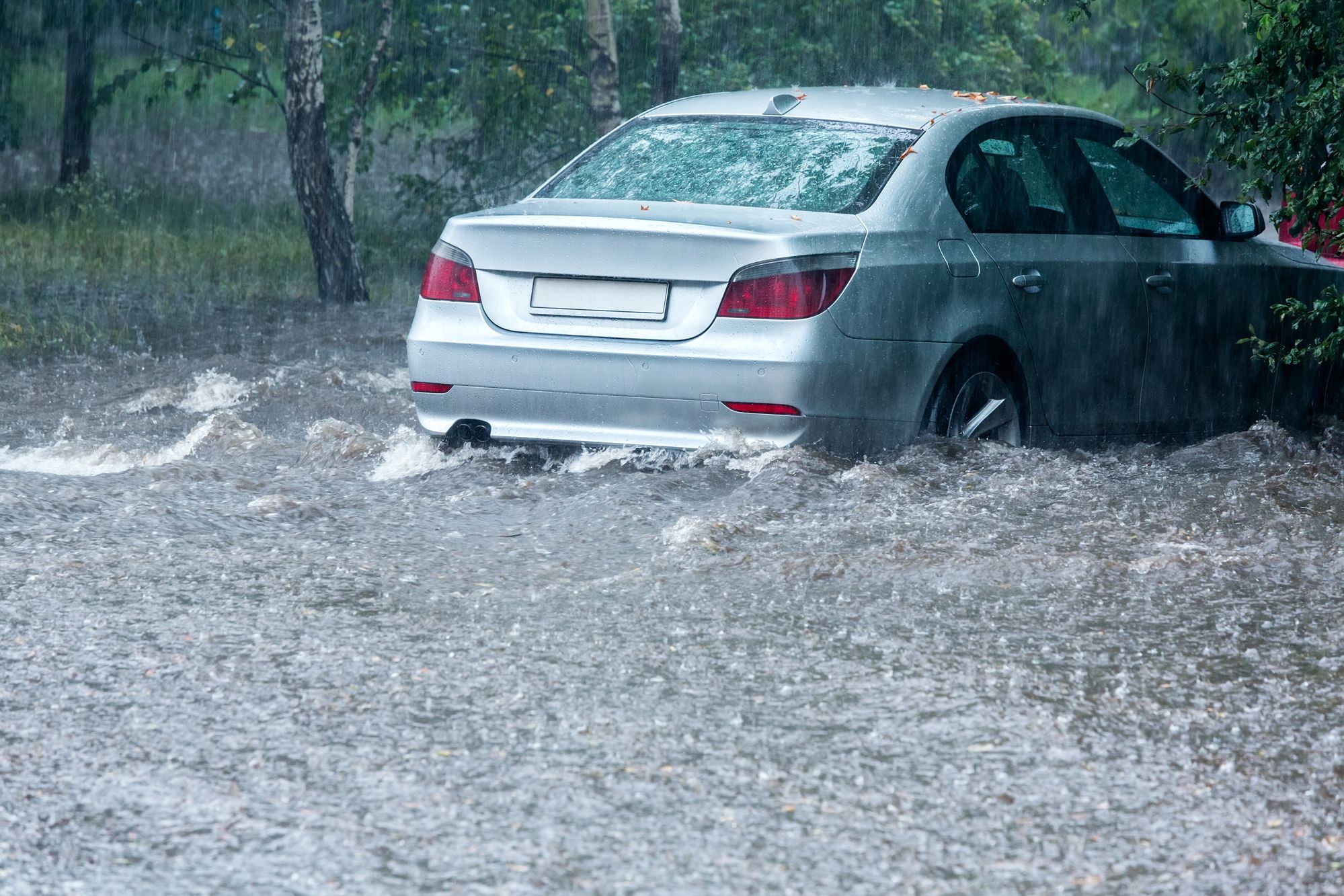Over the years we've all seen devastating footage of cars floating away on raging flood waters and admired the courage of rescuers climbing down from helicopters to save the occupants of stranded vehicles, but we never expect one of those cars to be ours. It is easy to adopt a mentality of “pshh, that will never happen to me,” until you find yourself stranded with a flooded vehicle and no idea what to do. Luckily, our team at Wrench has put together some tips for how to manage a flooded vehicle. The first thing to do is to always assess the safety of yourself and your vehicle. If you need to call for help, do so immediately in order to ensure quick service. If your vehicle has fallen victim to a nasty rainstorm or a burst pipe in the garage, use these tips to determine how to proceed. If you are unsure about the extent of the damage or what your best course of action may be, book an appointment with a Wrench mobile mechanic today. Our mechanics come to your home or place of work so that you do not have to be worried about driving a damaged vehicle or missing out on quality time with your family. Until we are able to help, follow these tips we have compiled with how to proceed.
Get a free quote
- Contact Your Insurance Company. Regardless of the extent of the flood damage, the first thing you should do call your insurance company. Flood damage is generally covered by comprehensive insurance, but it is important that the company is contacted immediately so that you can determine what the cost of repair might be.
- Assess The Damage. Begin your assessment by determining how deep the car was submerged or how much of the interior was affected. Most insurance companies will consider the car totaled if water reaches the bottom of the dashboard or higher. It is a good idea to take pictures of your vehicle as soon as you are aware of the damage so that the insurance company knows what they are dealing with or so the mechanic can understand how the damage has developed in the following days.
- Begin The Clean Up. The sooner you start the clean up of your car the better. Recover any of your personal possessions and place towels on the floor and across seats to soak up excess water. It is likely that carpets, mats, door panels, and upholstery will need replacing if the damage is extremely severe. If it is the case of an unfortunate case of forgetfulness that caused you to leave the windows down or the top off during a rainstorm, you may be able to remedy the damage on your own, or at least the repairs may not be as extreme.
- Check Engines And Transmissions. Petrol engines typically need to be hand-turned with the spark plugs removed to drain fluid from the cylinder chambers but diesel blocks require more complex solutions. Inspecting transmission must be overhauled if necessary before attempting to start the engine. This is something that is difficult to do if you do not have extensive vehicular knowledge. In this case, we recommend scheduling an inspection with a Wrench mobile mechanic to assess the damage to these crucial parts of your vehicle.
- Check Electrical Systems. Damage to the electrical system is a huge risk, which could often cause problems throughout the vehicle, from breaking the door switches and dashboard lights to affecting whether warning lights will flash on. This is another instance in which a mobile mechanic is going to be your best friend.
- Beware Of Flood-Damaged Replacements. If your vehicle has been inspected by a professional and has been cleared for driving, one of your first tasks should be to drain and replace fuels, oils, and wiper fluids, then replace those replacements earlier than usual. Water invasion can cause damage or contamination of these fluids and it is best to get them replaced to avoid any additional road bumps.
- Inspect Around Wheels and Underside. Before attempting to drive the car, set the parking brake and look for debris lodged around the tires, brakes and underbody. Smallest sticks or clumps of dried mud can make the car shimmy and shake once you get it up to speed. This is something you can ask the mechanic to do if you are worried about missing something when looking inspecting your vehicle.
While flooding is an extreme consequence of extreme weather, wet weather driving is a common occurrence and an important skill to have. You can check out another popular Wrench blog post for tips for driving in wet weather. However, the best advice we can give should the waters rise and roads turn to torrents is to think safe, be safe and stay safe. Please don't drive through floodwaters. Has your car been damaged by flood waters, or any kind of unwelcome water? Use Wrench mobile mechanic services to easily book an appointment for inspection. It's quick and hassle-free, and exactly what you need in a stressful situation.
Get a free quote


